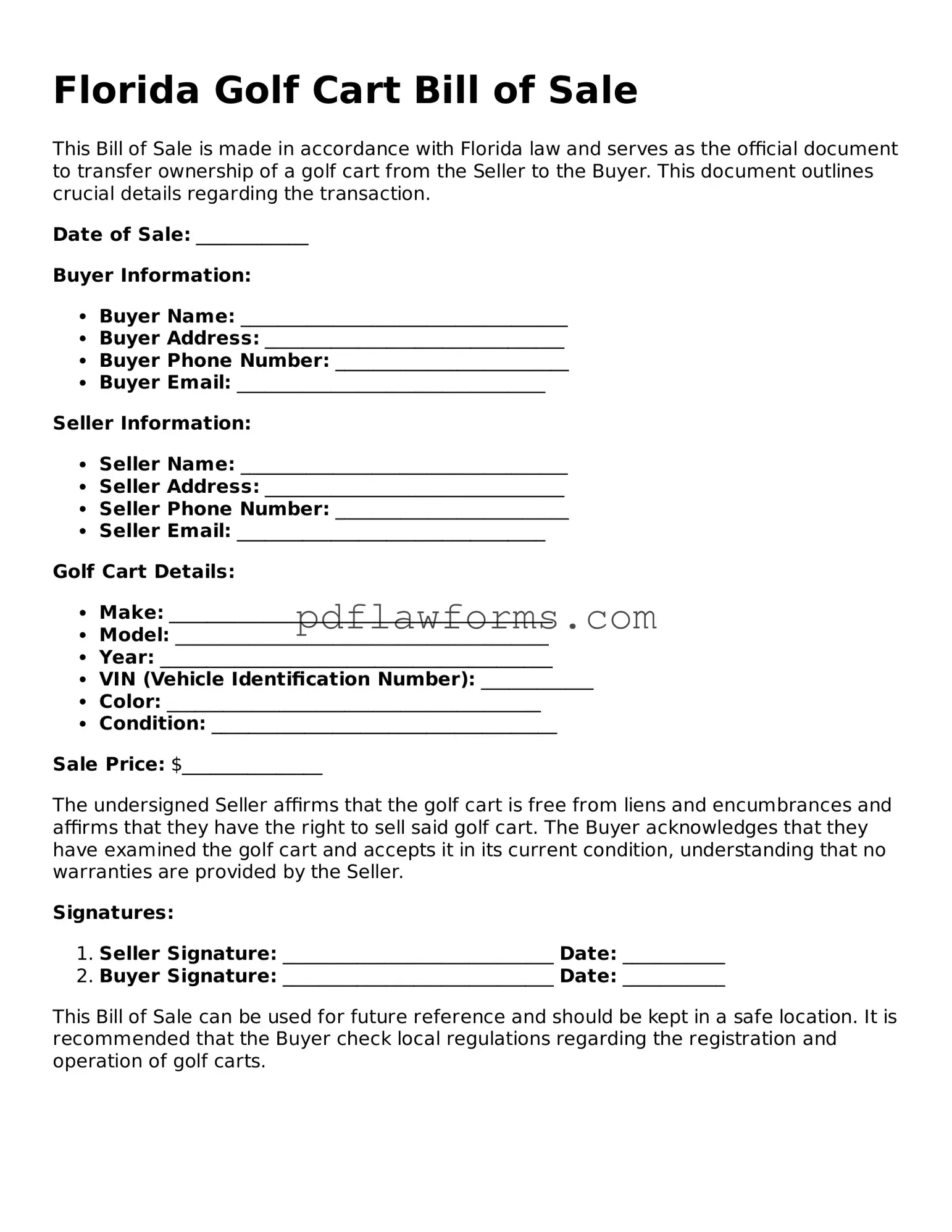Golf Cart Bill of Sale Form for the State of Florida
A Florida Golf Cart Bill of Sale form is a legal document that records the transfer of ownership of a golf cart from one party to another. This form serves as proof of the sale and includes important details such as the names of the buyer and seller, the purchase price, and a description of the golf cart. To ensure a smooth transaction, it's essential to fill out this form accurately.
Ready to complete your golf cart sale? Click the button below to fill out the form!
Make My Document Online
